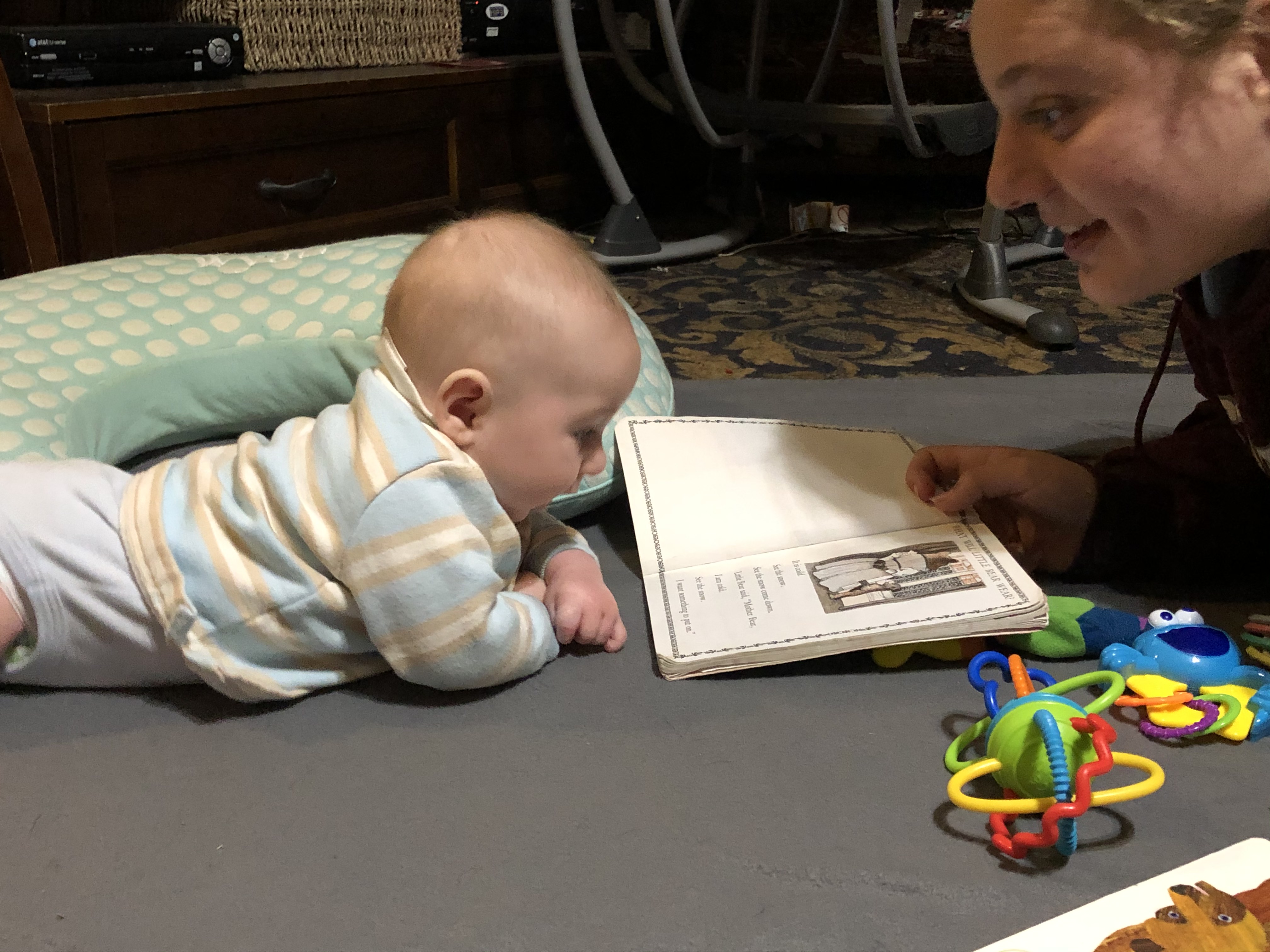Brain Builders start a powerful circle
- March 13, 2020
- / Shannon Nickinson
- / early-learning

Meet Jenna and Steven.
Jenna is part of a group of students at Bellview Middle School who are piloting a project for Studer Community Institute that aims to tap into the power of family to build a child’s brain.
Jenna’s little brother, Steven, is a 2019 Brain Bag baby.
“Jenna reads to Steven all the time and we look forward to getting new books to introduce to Steven,” says their mom, Dawn.
The sibling relationship is a family circle that has incredible power. It is a natural place for younger children to learn, develop and grow intellectually, socially and emotionally.
Researchers at the University of Essex first reported in 2014 the “sibling spillover effect” — that siblings (ages 11 to 16 in the study) can have an influence on academic success of their younger brothers and sisters.
Findings suggest that siblings can be a vital link between school and home — and that the youngest family members stand to benefit greatly from strengthening that connection.
That’s the inspiration behind the launch of our SCI Sibling Brain Builder project, which has two tracks:
— Middle School: At Bellview Middle School, a teacher champion with SCI program manager builds lesson plans around a children’s book that the Sibling Brain Builders read at home with their little brother or sister, ages 0 to 5. The lesson plans are then used in class to review concepts important to the language arts skill-building of the middle schoolers. The learning environment promotes brain building in babies while improving kindergarten and school readiness. We have 21 students in the first group of Brain Builders — including Jenna.
Their fluency scores from the beginning of the year will be compared to their scores at the end of the school year.
— Elementary: At four schools, — Montclair, Weis, Semmes and Lincoln Park — teachers help students track minutes spent reading to a younger family member or schoolmate, earning books for themselves and their “reading buddies” for meeting certain milestones.
Through March 13, 2020, we’ve had 120 students participate, logging more than 500 hours of reading.
At some schools, fourth-grade teachers have assigned a classroom of students to be Reading Buddies with 4-year-olds in a VPK class in their school.
Is it working?
We have a little data, and are still gathering more, but what we have is promising.
The Montclair fourth-graders who are Buddy Readers averaged a 38 percent increase in their reading fluency scores from August to December. The students in the lowest quartile of the class in their August scores saw an average increase of 46 percent.
Ashley Roache, one of our teacher partners at Montclair, says her students love getting their own new books when they meet their reading goals — and they love it even more when they get to give their little buddies a new book of their own.
We are proud of the progress so far — and of the support that you have given us to pilot this project.
We’d love your help to keep it going. Click here to donate to help us keep Jenna and Steven and all of our Brain Builders receiving new books to share stories to tell.
That’s a circle we hope will never be unbroken.
 CivicCon launches with a look at good growth in cities
CivicCon launches with a look at good growth in cities
 Building stronger brains one baby, one parent at a time
Building stronger brains one baby, one parent at a time
 SCI debuts commercial on Early Learning City
SCI debuts commercial on Early Learning City
 Entrecon: World class speakers and an opportunity to sharpen skills
Entrecon: World class speakers and an opportunity to sharpen skills
 PYP Quality of Life survey 2017
PYP Quality of Life survey 2017
 EntreCon Pensacola 2016: A look back
EntreCon Pensacola 2016: A look back
 Leadership tip: getting better employee takeaways
Leadership tip: getting better employee takeaways
 Leadership tip: be interested instead of interesting
Leadership tip: be interested instead of interesting
 Leadership tip: delivering difficult messages
Leadership tip: delivering difficult messages
 Brain Bags boost Arc, Early Childhood Court programs
Brain Bags boost Arc, Early Childhood Court programs